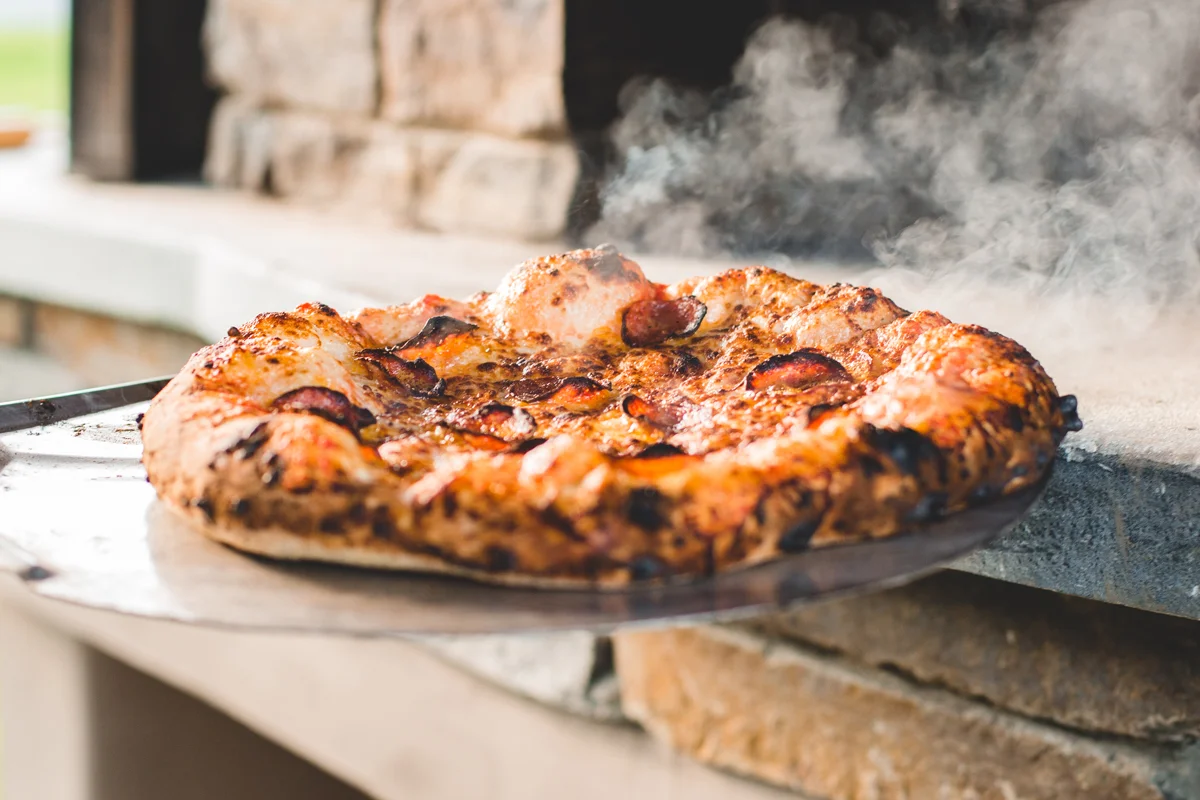Who doesn’t love pizza? It’s the ultimate comfort food, with its gooey cheese, savory sauce, and tantalizing toppings, all resting atop a perfectly baked crust.
But what sets a good pizza apart from a great one? The answer lies in the crust – the foundation upon which the entire pizza experience is built.
In this article, we’ll delve into the secrets of achieving the perfect pizza crust, sharing valuable tips and techniques that will elevate your homemade pizza game to new heights.

1. Understanding the Importance of the Crust
Before we delve into the nitty-gritty details of crust perfection, let’s take a moment to appreciate the crucial role that the crust plays in the overall pizza experience.
The crust is more than just a vessel for holding toppings; it’s the backbone of the pizza, providing structure, texture, and flavor.
A well-crafted crust can elevate even the simplest toppings, turning an ordinary pizza into a culinary masterpiece.
2. Choosing the Right Flour
The foundation of any great crust is high-quality flour.
When it comes to pizza dough, not all flours are created equal.
Opt for high-protein flours, such as bread flour or Tipo “00” flour, which have the gluten content necessary to create a chewy, elastic crust.
Experiment with different flour blends to find the perfect balance of texture and flavor for your crust.
3. Mastering the Dough
The key to a perfect crust lies in mastering the art of dough-making.
Start by combining your flour with water, yeast, salt, and a touch of olive oil.
Knead the dough until it’s smooth and elastic, then let it rest and rise until doubled in size.
Don’t rush this process – allowing the dough to ferment slowly will develop complex flavors and create a light, airy crust.
4. The Power of Proper Fermentation
One of the most overlooked secrets to achieving the perfect pizza crust is proper fermentation.
Allowing your dough to ferment slowly in the refrigerator for at least 24 hours (or up to 72 hours for maximum flavor development) will work wonders for the texture and taste of your crust.
This extended fermentation period allows the yeast to work its magic, breaking down complex sugars and creating a more flavorful crust with a tender crumb.

5. Getting the Temperature Right
When it comes to baking pizza, temperature is everything.
Preheat your oven to the highest temperature possible – ideally around 500°F to 550°F – and use a pizza stone or steel to ensure even heat distribution.
A hot oven and a preheated baking surface are essential for achieving that coveted crispy crust and perfectly melted cheese.
6. The Art of Stretching and Shaping
Once your dough has had time to ferment and your oven is preheated, it’s time to stretch and shape your crust.
Avoid using a rolling pin, as this can compress the dough and result in a tough crust.
Instead, gently stretch the dough by hand, working from the center outward to create a uniform thickness.
If you prefer a thicker crust, simply leave a border of un-stretched dough around the edges.
7. Embracing Imperfection
While achieving the perfect crust is certainly a worthy goal, it’s important to remember that perfection is subjective.
Embrace the imperfections that come with homemade pizza – whether it’s a slightly misshapen crust or uneven toppings.
These quirks are what give homemade pizza its charm and character, making each pie a unique culinary creation.
Conclusion
In conclusion, the secret to the perfect pizza crust lies in a combination of quality ingredients, proper technique, and a little bit of patience.
By choosing the right flour, mastering the art of dough-making, and embracing the power of fermentation, you can create a crust that rivals that of your favorite pizzeria.
So roll up your sleeves, preheat your oven, and get ready to embark on a delicious journey to pizza perfection.

FAQs
1. Can I use all-purpose flour instead of bread flour for my pizza dough?
Yes, you can use all-purpose flour, but keep in mind that it has a lower protein content than bread flour, which may result in a less chewy crust.
2. How can I prevent my pizza crust from becoming soggy?
To prevent a soggy crust, make sure not to overload your pizza with sauce and toppings.
Additionally, preheating your baking surface and using a pizza stone or steel can help absorb excess moisture.
3. Can I freeze pizza dough for later use?
Yes, pizza dough can be frozen for later use.
Divide the dough into individual portions, wrap tightly in plastic wrap, and place in a freezer bag.
Thaw in the refrigerator overnight before using.
4. How thick should I roll out my pizza dough?
The thickness of your pizza dough is a matter of personal preference.
For a thin crust, roll the dough out to about 1/8 inch thick.
For a thicker crust, leave it slightly thicker, around 1/4 inch.
5. Can I use a pizza stone on a grill instead of in the oven?
Yes, a pizza stone can be used on a grill to achieve that delicious charred crust.
Just make sure to preheat the stone on the grill before placing the pizza on top.
